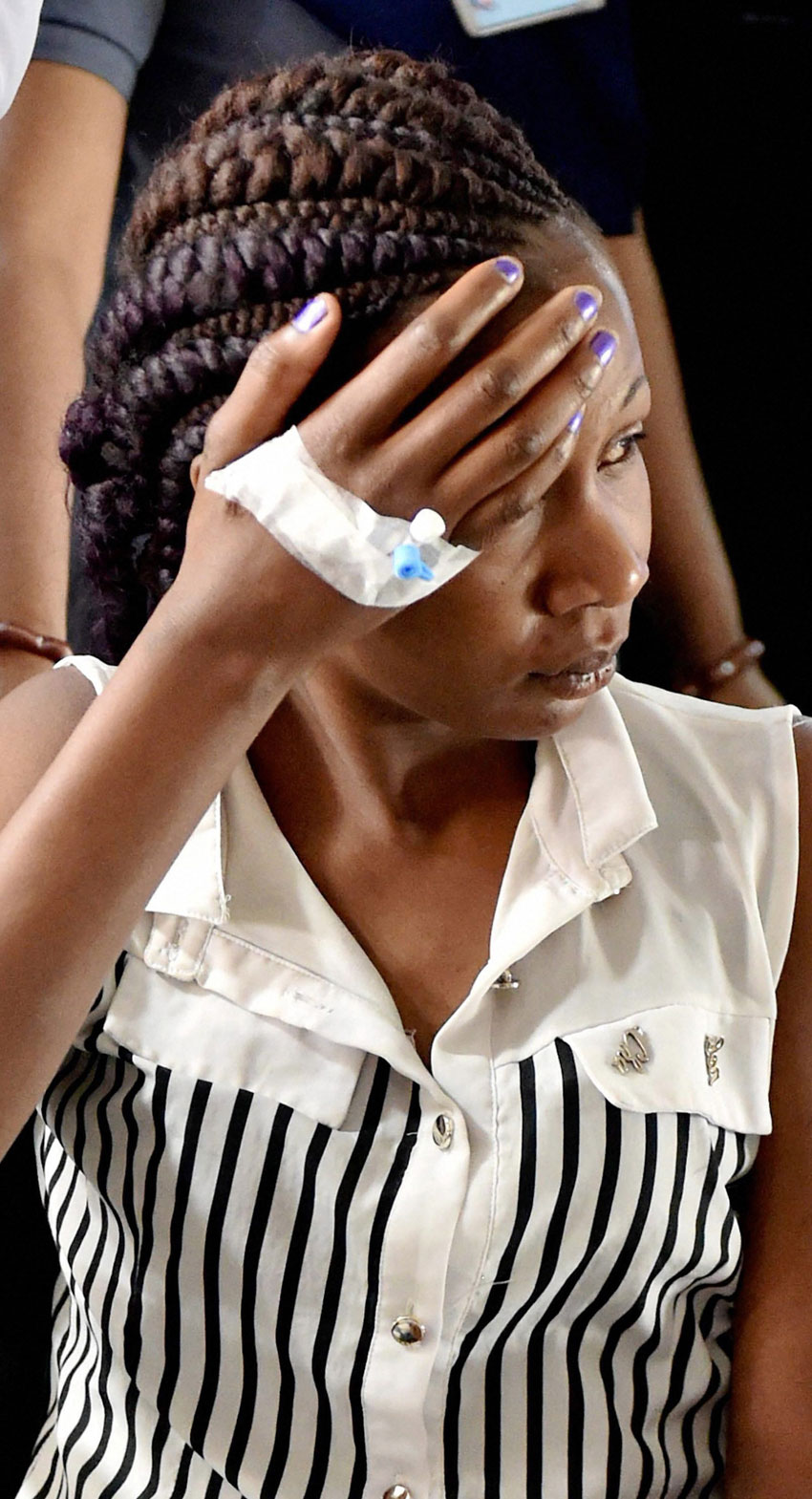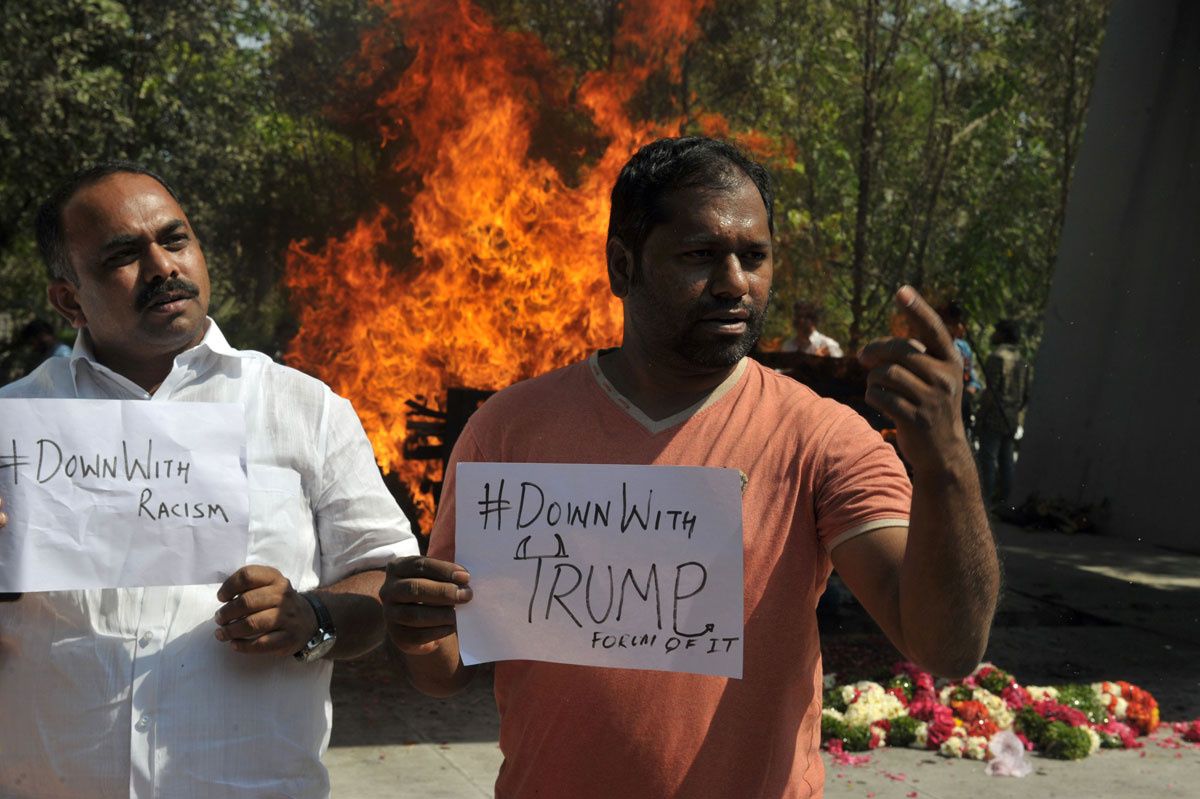What Indians Should Understand About Racism
Supporters of the killed Indian engineer Srinivas Kuchibhotla, who was shot dead in Kansas, take part in a protest against racism and President Donald Trump, in front of Kuchibhotla’s burning funeral pyre, in Hyderabad, Feb. 28. Thousands of Indians visit the United States every year for work or study, and the killing of 32-year-old engineer Srinivas Kuchibhotla in a Kansas bar has caused shockwaves around the country. (Noah Seelam/AFP/Getty Images)
Hate crimes in the United States have increased substantially after Donald Trump took over the Oval office. The target of hate crimes is rather surprisingly Indian Americans, the community best known for its successful pursuit of the American dream, writes Ash Murthy. – #Racism #India #IndianAmerican #Community #Commentary
The spate of hate crimes against the model minority begun with a fatal shooting at at a Kansas bar. 32 year old Srinivas Kuchibhotla, an engineer, was asked about his visa and fatally shot minutes later.
A week later, A Sikh American became the victim of another fatal “get out my country” attack in Seattle. In San Jose, 41 year old Inderjit, a PhD in Physics from NorthWestern University, was accosted and verbally harassed by a stranger.
The reverberations of the racist attacks have caused panic and anxiety not only among the Indian diaspora, but back home, also 8000 miles away in India.
Our celebrities and politicians were quick to condemn racism. Among engineers and college students, the usual euphoria about pursuing a career in the United States is now replaced with anger and disappointment over the rising xenophobia.
At Kuchibhotla’s funeral, as the departed engineer’s father lit the pyre, family and friends began to shout anti Trump slogans.
Ironically, Donald Trump was very popular amongst us until the fatal shooting.
Several little known right-wing organizations conducted prayers for then-candidate Trump’s victory in the American general elections.
In a Hindu Republican event, the Indian American audience erupted in applause as Trump spoke a few words in Hindi and praised Prime Minister Modi.
As the world criticized Trump’s decision to ban immigration from seven Muslim countries, the controversial executive order was widely applauded on Indian social media. The only disappointment was that the list of banned countries did not include Pakistan.
As a member of the Indian diaspora in the United States, I believe it is time for us to take a moment to introspect the culture we perpetuate, and our paradoxical values towards racism. Then perhaps, we can better confront the challenges of being a minority.
Among Indians, a consensus against racism is reserved for incidents outside India.

The arrest of diplomat Devyani Khobragade in New York and the detainment of actor Shah Rukh Khan at an American airport for additional security checks resulted in a chorus of anger and condemnation against racism by angry Indians oblivious to the racism faced by millions of Indians in their own country, by their own countrymen and women.
In a study to measure racial tolerance, two Swedish economists asked respondents in more than 80 countries to identify the kind of people they would not want as neighbors. India was one of the two countries where the highest percentage of respondents did not prefer a neighbor of a different race. Not surprisingly, landlords refusing to rent apartments to tenants who speak the “wrong” language or belong to the “wrong” part of the country is common practice.
Indians with darker complexions are rendered subordinate. Matrimonial ads unabashedly boast of light skin, an asset no less valuable than an Ivy League degree.
There is certainly a lot, Indians and the world at large can learn about the dangers of xenophobia from the experiences of African students in India.
From shopping malls to banks, upscale neighborhoods to slums, Africans in India are used to the stares, the derogatory names in hushed voices that follow them around. Occasionally racism takes a violent turn. In Bangalore, India’s Silicon Valley, a Tanzanian girl was attacked by a mob as retaliation for a car accident caused by a Sudanese man unknown to her. In the eyes of the mob, the Tanzanian’s skin color made her culpable for the accident.
The rising racist attacks against Indians in the U.S. are undoubtedly unjustified. But how will the world take racism against us seriously, if we ourselves don’t take a serious stand against racism?


